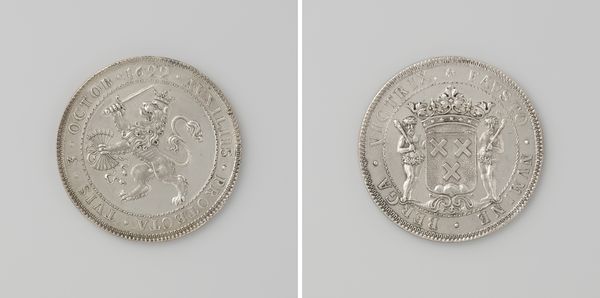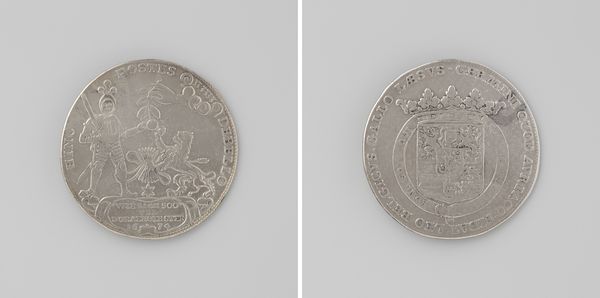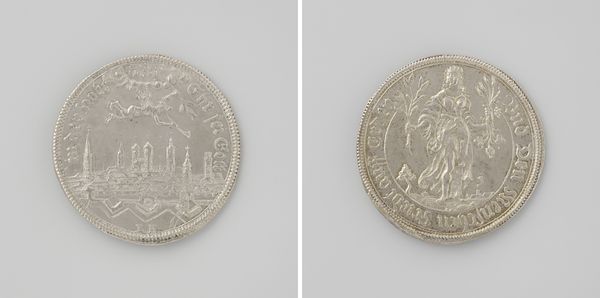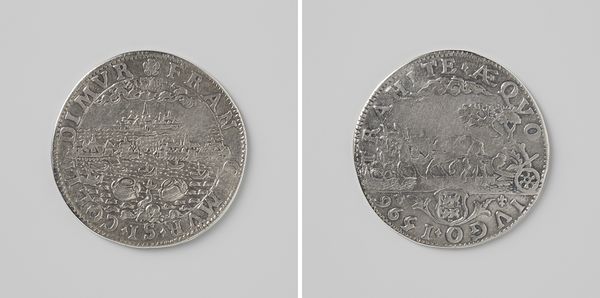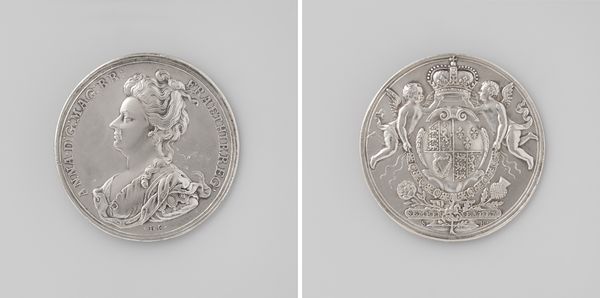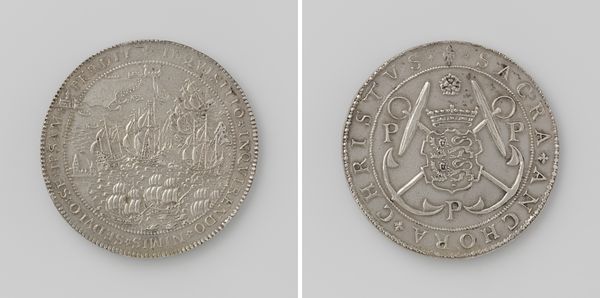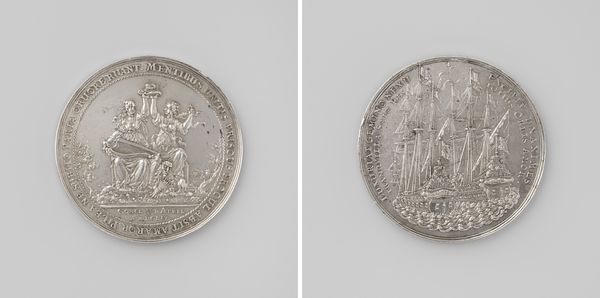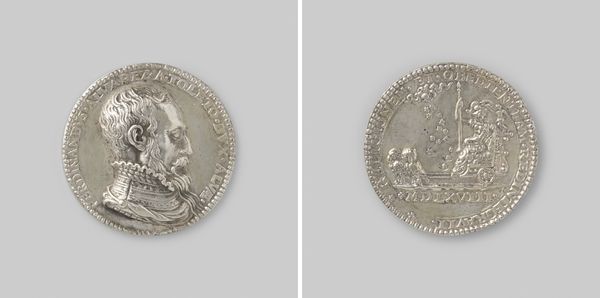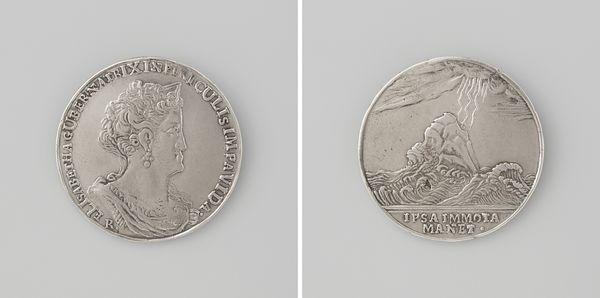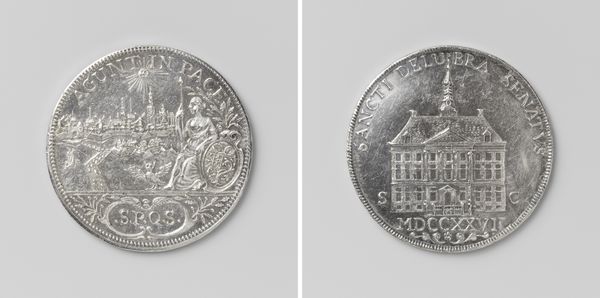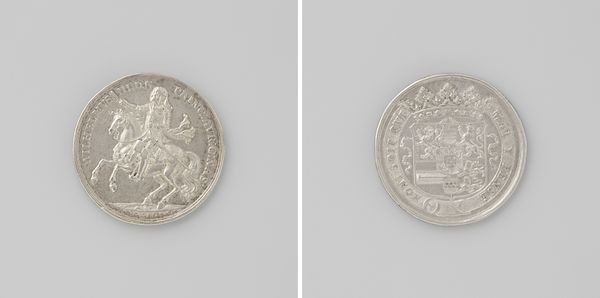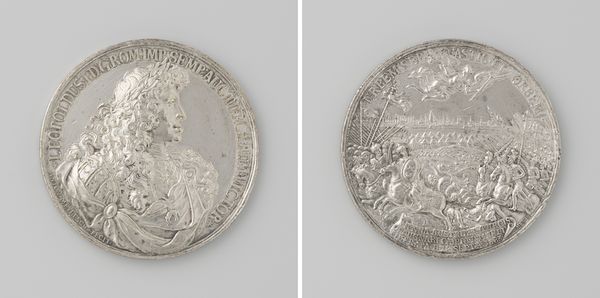
Inname van Lier, penning geschonken aan de burgers van Antwerpen die de stad verdedigden 1595
metal, relief, sculpture
portrait
metal
relief
11_renaissance
sculpture
history-painting
Dimensions: diameter 4.7 cm, weight 44.33 gr
Copyright: Rijks Museum: Open Domain
Editor: This metal relief, dating back to 1595, is titled "Inname van Lier, penning geschonken aan de burgers van Antwerpen die de stad verdedigden," created by Jacques Jonghelinck. I am immediately struck by how small it is and yet how much detail is packed into the portrait on one side. What narratives do you see embedded in this piece? Curator: Well, considering the context of the late 16th century, particularly the Dutch Revolt, this isn't just a portrait; it's a potent symbol. Who do you think this figure represents, and what might her crown signify? Editor: Given the context, perhaps it is an allegorical figure, like Lady Liberty? The crown must surely denote some form of sovereign power? Curator: Precisely. It likely represents Antwerp, or perhaps even the broader ideal of liberty, being honored for its defense. The inscription on the reverse likely commemorates the specific events surrounding the siege. We have to understand it as propaganda meant to galvanize the citizens. Editor: Propaganda? So, it's not just art, but a tool for political influence? Curator: Absolutely. Coins and medals in this period often served as a means to disseminate a particular political message, celebrating victories and bolstering morale during times of conflict. Its size meant it could be carried and shared, like a political meme of today. What feelings are invoked as you think about that relationship between power, gender and its material accessibility? Editor: It really brings a new understanding to the saying that history is written by the victors. This object helped define that historical narrative. Curator: Indeed, and it reminds us to critically examine whose stories are being told and for what purpose, even when those stories are presented through seemingly simple art forms. Editor: Thanks. I hadn't thought about art on this small a scale in terms of a wider political stage. Curator: That's the power of art history – it invites us to constantly reassess our assumptions.
Comments
No comments
Be the first to comment and join the conversation on the ultimate creative platform.

